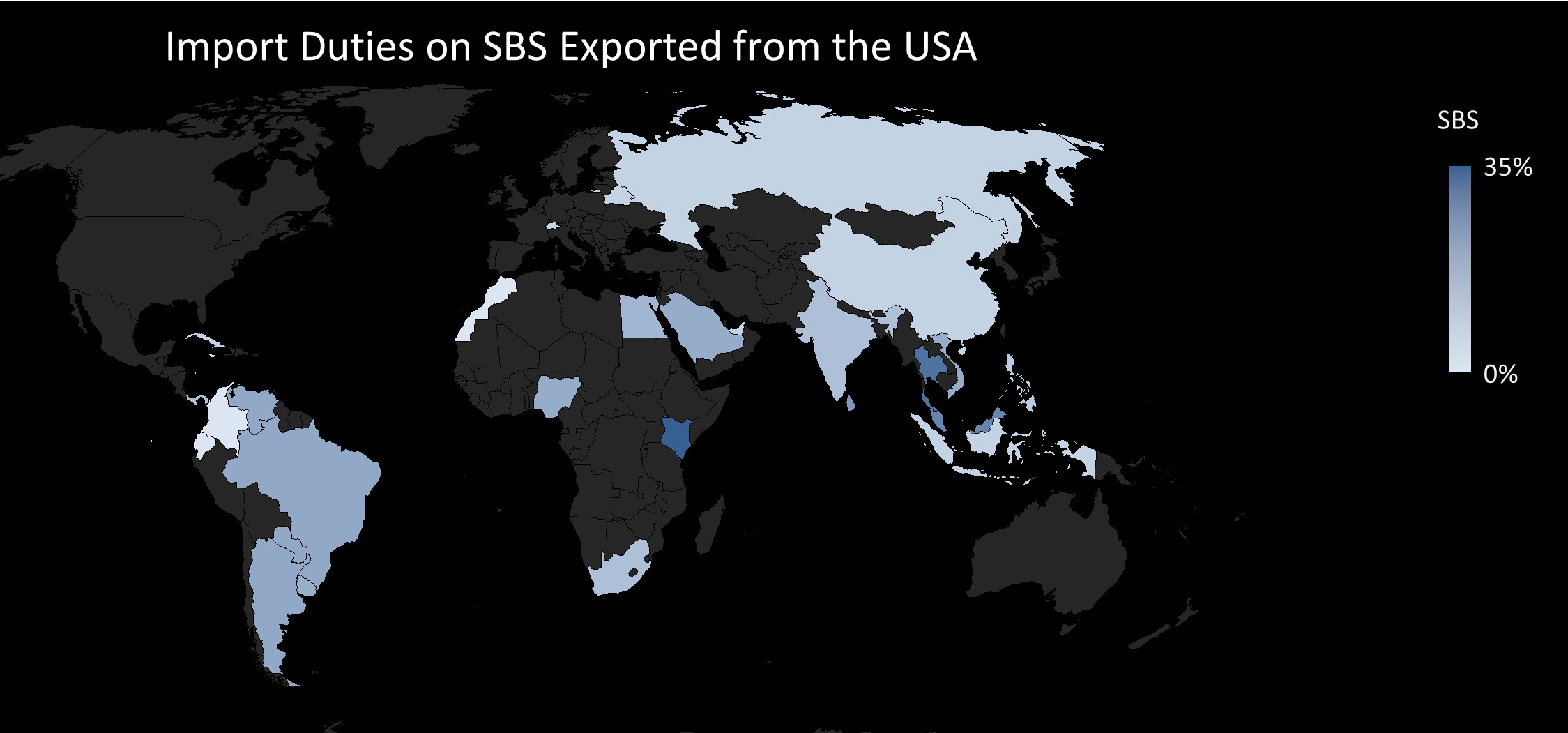3 min read
How Will Trump's Reciprocal Tariffs Impact Pulp and Paper Professionals, and How Can They Respond?
ResourceWise
:
Mar 27, 2025 2:13:22 PM

President Trump has stated that on April 2, he will implement reciprocal tariffs, which could significantly impact global trade dynamics. Under this policy, any country that imposes tariffs on U.S. imports will face identical tariffs on its exports to the United States for the same category of goods. This shift demands that businesses analyze the potential consequences and adapt accordingly.
Understanding the Implications
For companies involved in international trade, introducing reciprocal tariffs means a shifting landscape for costs, supply chains, and competitive positioning.
In the pulp, paper, and forest products industries, this could have widespread effects. Manufacturers that rely on imported raw materials may face increased costs, which could be passed down the supply chain, affecting pricing strategies and profitability. Exporters will need to reassess market viability as higher tariffs in target countries could reduce demand for U.S. products.
These tariffs could also drive changes in sourcing and production decisions. Companies may look for alternative suppliers in tariff-free or lower-tariff regions, potentially leading to shifts in trade partnerships and the normal flow of the supply networks. Businesses operating across multiple markets will need to navigate complex regulatory changes to avoid unexpected financial and operational disruptions.
We could also see pricing dynamics within the industry change significantly. Increased costs could prompt domestic manufacturers to seek efficiencies in production, re-evaluate freight logistics, or explore new market segments where demand remains stable. With all these potential implications, the ability to anticipate and react to these changes will be crucial for maintaining competitiveness in a rapidly evolving trade environment.
How Professionals Can Respond to Tariff Changes
With reciprocal tariffs set to take effect, professionals in the pulp, paper, and forest products industries must be proactive in assessing the impact on supply chains, production costs, and market competitiveness. Depending on the impact, companies should consider strategies such as diversifying supplier networks, optimizing logistics to minimize tariff-related expenses, and reevaluating pricing models to maintain market positioning. Understanding the full cost implications of these changes is crucial to maintaining profitability and strategic advantage.
A key part of this response is leveraging advanced analytical tools to gain real-time visibility into trade flows, costs, and tariff structures. FisherSolve, for example, provides unparalleled insights into the true cost of doing business in this new trade environment.
Using Trade Data to Guide Strategy
One of FisherSolve’s standout features is its comprehensive import and export duties database, which includes all costs associated with delivery—including freight, tariffs, and duties. This level of detail allows users to see exactly how trade policies impact product pricing across borders.
To look at an example of this feature at work, let’s look at the map showing import duties on Solid Bleached Sulfate (SBS) board exported from the U.S. This information reveals how different countries currently impose varying levels of tariffs on SBS imports, with some reaching as high as 35%. If Trump’s proposed reciprocal tariff policy is enacted, these same tariffs could be mirrored by the U.S. against imports from those countries.
 Source: FisherSolve
Source: FisherSolve
Access to the duties placed on various products across numerous locations enables professionals to:
- Identify at-risk markets
- Plan market diversification
- Anticipate cost shifts
- Build contingency plans
Visualizing Trade Impacts
For companies seeking a broader understanding of trade flows and market shifts, Forestat Global provides an essential perspective. Our analytical tool offers powerful visualization features that allow users to track which countries export specific goods to the U.S.
 Source: ForestStat Global
Source: ForestStat Global
With Trump’s new tariffs, countries exporting to the U.S. will need to assess how their competitiveness is affected, and U.S. buyers must reconsider their supply sources. By leveraging Forestat Global’s real-time trade data, businesses can identify alternative suppliers, gauge market vulnerabilities, and make data-backed decisions to stay ahead of the curve.
Finding New Market Opportunities
Once professionals have used FisherSolve’s import and export duties database to identify which markets impose high tariffs on U.S. exports—like those shown in the SBS tariff map—they can then find more profitable and strategic trade opportunities using Market Optimizer.
Market Optimizer, a module within FisherSolve, empowers companies to simulate a variety of trade scenarios from a specific mill to global regions, countries, and even individual destinations. This means professionals can analyze how a given mill would perform in 100+ potential export markets—all from a single view.
For example, if SBS exports to a specific country suddenly faces a mirrored 25% tariff due to the reciprocal policy, Market Optimizer allows professionals to evaluate how their mill stacks up against top suppliers in other countries with lower tariff burdens. They can use these insights to redirect supply, reallocate volume, or adjust pricing strategy accordingly.

Source: Market Optimizer - FisherSolve
The Need for Reliable Data in a Changing Trade Landscape
In an era of rapidly shifting trade policies, access to reliable and actionable data is more critical than ever. Companies that fail to adapt to new tariff structures risk increased costs and lost market opportunities. With ResourceWise's extensive data platforms, businesses have the power to anticipate changes, mitigate risks, and seize opportunities before their competitors do.
Are you ready for a new paradigm in pulp and paper trade?
Learn more about how you can equip yourself with the best tools available to navigate the changing tides of international commerce.




